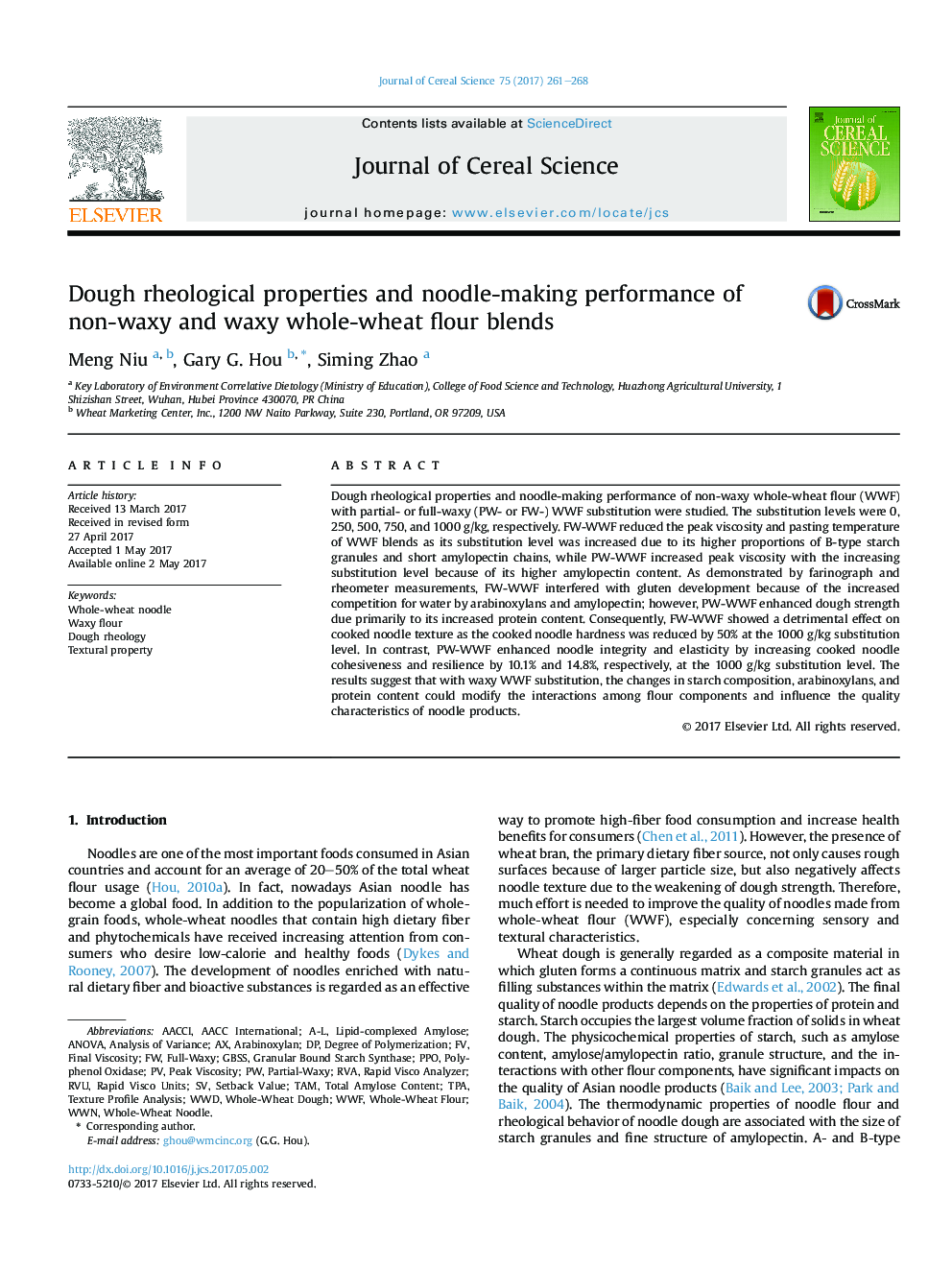| Article ID | Journal | Published Year | Pages | File Type |
|---|---|---|---|---|
| 5762379 | Journal of Cereal Science | 2017 | 8 Pages |
Abstract
Dough rheological properties and noodle-making performance of non-waxy whole-wheat flour (WWF) with partial- or full-waxy (PW- or FW-) WWF substitution were studied. The substitution levels were 0, 250, 500, 750, and 1000Â g/kg, respectively. FW-WWF reduced the peak viscosity and pasting temperature of WWF blends as its substitution level was increased due to its higher proportions of B-type starch granules and short amylopectin chains, while PW-WWF increased peak viscosity with the increasing substitution level because of its higher amylopectin content. As demonstrated by farinograph and rheometer measurements, FW-WWF interfered with gluten development because of the increased competition for water by arabinoxylans and amylopectin; however, PW-WWF enhanced dough strength due primarily to its increased protein content. Consequently, FW-WWF showed a detrimental effect on cooked noodle texture as the cooked noodle hardness was reduced by 50% at the 1000Â g/kg substitution level. In contrast, PW-WWF enhanced noodle integrity and elasticity by increasing cooked noodle cohesiveness and resilience by 10.1% and 14.8%, respectively, at the 1000Â g/kg substitution level. The results suggest that with waxy WWF substitution, the changes in starch composition, arabinoxylans, and protein content could modify the interactions among flour components and influence the quality characteristics of noodle products.
Keywords
Related Topics
Life Sciences
Agricultural and Biological Sciences
Agronomy and Crop Science
Authors
Meng Niu, Gary G. Hou, Siming Zhao,
